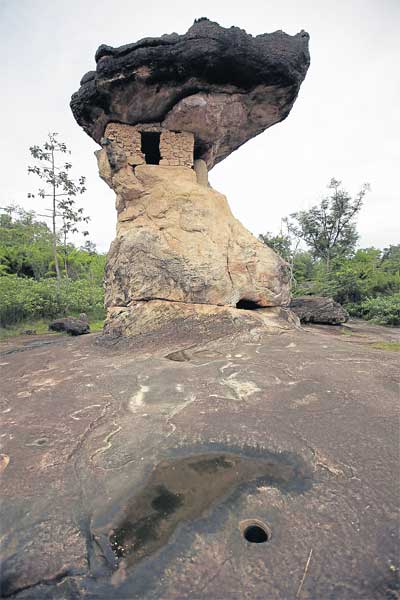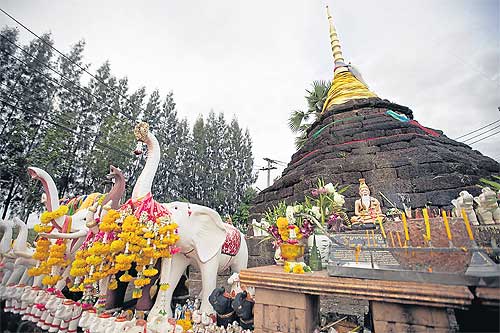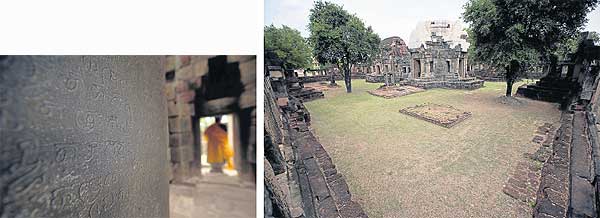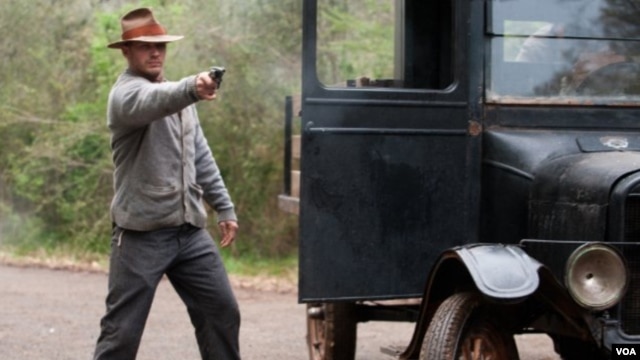Future of Retail: How Companies Can Employ Big Data to Create a Better Shopping Experience

From healthcare to finance to professional sports, data is being collected and analyzed like never before — but much of it goes on behind the scenes where the average person may not even notice. The retail sector, however, is different. By definition it interacts with average folks in a way that few other industries do, and retailers are interested in learning as much about their customers as they can. In the process, they are radically altering the buying experience for customers — both online and, increasingly, also in the world of bricks and mortar stores.
If you’ve done any shopping online recently – you’ve probably already seen Big Data in action. We’ve all experienced it: You go shopping for a pair of shoes online, put them in your virtual shopping cart, but then for some reason change our mind. Afterwards, seemingly every site you visit features an ad for that very pair of shoes at that same online store. The reason? Online retailers can give you a virtual identification number and track you as you go from site to site, and purchase targeted ads for products they already know you’re strongly interested in.
(MORE: Future of Retail: Companies That Profit By Investing in Employees)
Based on a user’s behavior, sites like Amazon can present special offers or alert users of products they might not have otherwise been aware. According to a report issued last year by McKinsey Global Institute, Amazon has had tremendous success by using data it has collected to discover what additional products its users are likely to buy. As the study noted, “Amazon reported that 30 percent of sales were due to its recommendation engine.”
But the proliferation and maturation of information technology hasn’t only aided business. According to Paula Rosenbaum, a retail analyst at RSR Associates, the ubiquity of Internet access and smartphones has given consumers more bargaining power than ever. “I don’t think people realize how much the consumer is in control these days,” she says. Consumers are no longer bound by geography — the handful of stores offering a specific product within driving radius — when searching for the best price or service. Even when they are physically shopping in a store, smartphones allow them to quickly and easily check for better prices elsewhere.
In the era of Big Data, it’s those physical stores that seemed destined to be left out in the cold. But the vast majority of purchases – somewhere around 90% — still occur in a traditional retail setting. And brick and mortar retailers are looking towards big data to help them stay relevant.
One company that hopes to give traditional retailers the kind of analytic tools available to ecommerce firms is RetailNext. The firm has developed a computer program that uses a store’s security cameras to give managers all kinds of information about how consumers interact with the store. Using this program, Retail Next can show exactly how many customers are in a given store at a time, which parts of the store they explore, which specific items customers spend a lot of time perusing — and which they do not. RetailNext can combine this information with other variables like staffing levels, weather, product assortment and placement to determine what does and doesn’t boost sales. Luxury retailer Mont Blanc has used RetailNext’s services to improve its staffing levels and its product arrangement within its stores, increasing same-store sales 20% in the process. Retailers like American Apparel and Family Dollar have also successfully utilized RetailNext’s services to improve the layout of their stores and increase same-store sales.
(MORE: Reports of the Shopping Mall’s Death Have Been Greatly Exaggerated)
In fact, it’s possible that traditional retailers could one day have a better understanding of their customers than ecommerce firms do. That’s at least what Tim Callan, Chief Marketing Officer at RetailNext, argues. He says that for customers in physical stores the “decision making capability is infinite, while there are only so many things they can do online.” In other words, given the right tools, a retailer can glean much more about a shopper from watching her peruse a traditional retail aisle than he can watching her click through links on a webpage. His firm is working on computer programs that can accurately distinguish — through video cameras — whether a shopper is male or female, and believes in the future this sort of technology could interpret customers’ facial expressions and other gestures that will help retailers understand why someone did or did not buy a certain product.
Inevitably, as retailers use Big Data to learn more about their customers — especially through video — privacy concerns will be raised. But as Callan argues, “video surveillance has been around for thirty years, and people assume that it’s necessary for public security.” Indeed, consumers have come to take it for granted that a camera is watching their every move in a store.
On the other hand, it’s one thing to for consumers to assume that cameras are watching, and another thing to have your every movement picked apart by a computer for marketing reasons. Pam Dixon, Executive Director of the World Privacy Forum, thinks that these types of methods are a breach of consumer privacy expectations, and that companies who use these types of analytics need – at the very least — to be forthright about their practices. “I think it’s absolutely crucial for these companies to come clean with the public and disclose what is happening,” she says.
While privacy issues related to in-store use of video cameras has yet to cause much of an uproar, another component of retail companies’ collection of data – smartphone tracking – has been a hot-button issue. The Wall Street Journal conducted a study in 2010 of over 100 popular smartphone applications and found that applications were collecting information about, “location, unique serial-number-like identifiers for the phone, and personal details such as age and sex,” and sending that information to marketing companies.
(MORE: Will Amazon Take Over the Word?)
Though privacy concerns about tracking users on smartphones has made many in the public uncomfortable, marketing intelligently through smartphones is believed to be a crucial next step for many retailers. Smartphones can bridge the gap between the online and offline worlds, because users always have their phones with them, even when they’re not browsing the Internet. Retailers can learn about a customer through their online shopping behavior and then offer them short-term discounts through a cell-phone when the consumer is near that stores brick-and-mortar location.
Unfortunately for consumers who are made uncomfortable by all this surveillance, there aren’t any federal laws that block this kind of behavior, and the federal regulators haven’t been entirely successful at forcing companies to be forthright about their practices. But for brick-and-mortar retailers who wish to serve their customers better by knowing them better, there has never been a more exciting time.
This is the fourth in a series of articles on the future of retailing. You can read the first three installments here, here, and here.
Read other related stories about this:
- Big Data Can Mean Big Returns in Retail SAP
- How big data is changing retail marketing analytics Revolution Analytics
Read more: http://business.time.com/2012/08/31/future-of-retail-how-companies-can-employ-big-data-to-create-a-better-shopping-experience/#ixzz25BbQeiN8





 An ancient painting at Wat Khao Chan Ngam in Nakhon Ratchasima.
An ancient painting at Wat Khao Chan Ngam in Nakhon Ratchasima. A piece of a Buddha statue in Phu Phrabat Historical Park in Udon Thani.
A piece of a Buddha statue in Phu Phrabat Historical Park in Udon Thani. Standing about 10m above ground level is the iconic rock named Hor
Nang Usa in Phu Phrabat Historical Park in Udon Thani. It is believed to
be used as a place for meditation during the Dvaravati period. The
historical park houses stunning rock structures, naturally carved by the
rain and wind for millions of years. The Fine Arts Department found 68
prehistoric archaeological sites, including 45 cave paintings and 23
scared places within the 3,430 rai plot. The park is now on a tentative
list of Unesco World Heritage sites.
Standing about 10m above ground level is the iconic rock named Hor
Nang Usa in Phu Phrabat Historical Park in Udon Thani. It is believed to
be used as a place for meditation during the Dvaravati period. The
historical park houses stunning rock structures, naturally carved by the
rain and wind for millions of years. The Fine Arts Department found 68
prehistoric archaeological sites, including 45 cave paintings and 23
scared places within the 3,430 rai plot. The park is now on a tentative
list of Unesco World Heritage sites.
 These ancient human figure paintings are found only in two places in
Phu Phrabat Historical Park. One is at the Khon Cave, which displays
seven humans figures painted in red and white. Another is located in a
cave called Pheung Hin Wat Pho Ta, but is not as clear as those in the
Khon Cave.
These ancient human figure paintings are found only in two places in
Phu Phrabat Historical Park. One is at the Khon Cave, which displays
seven humans figures painted in red and white. Another is located in a
cave called Pheung Hin Wat Pho Ta, but is not as clear as those in the
Khon Cave. The temple boundary stones (sema) created during the 9th -12th
century in the Dvaravati period have been left unattended inside Wat
Phra Phutthabat Bua Ban, a forest temple, about 18km away from Phu
Phrabat Historical Park. The stones were arranged in eight directions to
encircle a sacred stone at the centre. However, the central stone no
longer exists. In each direction, there are three stones in a row. Each
stone is of a different height, and laid in decending order. At the base
of the largest stone, there are different designs of carved work such
as figures of apsaras, heavenly female spirits often found in Hindu
mythology. According to Srisakra Vollibhotama, well-known archaeologist
and anthropologist, the place is the only spot in Thailand to see how
each sema was originally lined in Dvaravati temples. The Fine Arts
Department had a roof made on top of each row of these boundary stones
as protection, but the structure is in poor condition. Not far from the
group of stones, there are more boundary stones left abandoned and
scattered around a cliff.
The temple boundary stones (sema) created during the 9th -12th
century in the Dvaravati period have been left unattended inside Wat
Phra Phutthabat Bua Ban, a forest temple, about 18km away from Phu
Phrabat Historical Park. The stones were arranged in eight directions to
encircle a sacred stone at the centre. However, the central stone no
longer exists. In each direction, there are three stones in a row. Each
stone is of a different height, and laid in decending order. At the base
of the largest stone, there are different designs of carved work such
as figures of apsaras, heavenly female spirits often found in Hindu
mythology. According to Srisakra Vollibhotama, well-known archaeologist
and anthropologist, the place is the only spot in Thailand to see how
each sema was originally lined in Dvaravati temples. The Fine Arts
Department had a roof made on top of each row of these boundary stones
as protection, but the structure is in poor condition. Not far from the
group of stones, there are more boundary stones left abandoned and
scattered around a cliff. The small golden stupa on top of the old sandstone blocks is called
Phra That Phon Thong. Judging by abundant offerings encircled the base,
the stupa is a sacred place for locals. People also honk while driving
past the stupa as a mark of respect. Built during the Khmer Empire, the
stupa housed relics of the Buddha and gold Buddha images, which were
transferred to local temples in Udon Thani when the Highway 22 was
constructed in 1909. The local municipality of Nong Bua set aside a 1.2
million baht budget to renovate the area and also build another
structure to house a seated Buddha not far from the stupa. Phra That
Phon Thong is not far from downtown Udon Thani and is along Highway 22
heading towards the Ban Chiang archaeological site.
The small golden stupa on top of the old sandstone blocks is called
Phra That Phon Thong. Judging by abundant offerings encircled the base,
the stupa is a sacred place for locals. People also honk while driving
past the stupa as a mark of respect. Built during the Khmer Empire, the
stupa housed relics of the Buddha and gold Buddha images, which were
transferred to local temples in Udon Thani when the Highway 22 was
constructed in 1909. The local municipality of Nong Bua set aside a 1.2
million baht budget to renovate the area and also build another
structure to house a seated Buddha not far from the stupa. Phra That
Phon Thong is not far from downtown Udon Thani and is along Highway 22
heading towards the Ban Chiang archaeological site. TheBanChiangarcheological site isamust see for
thosewhovisitUdonThani. Itcomprisestwoparts; the nationalmuseumand the
excavation pit inWatPhoSi Nai,about 500maway. Ifyouvisited the place
before February2010,arevisit isamust.Themuseum hasundergone amajor
facelift, bringing iton par with international standards. Onentering
themuseum,a step-by-step explanation describeshowarchaeologists
workedwhenthey foundthe ancient items inBanChiang in 1972. Also
exhibited ishowprehistoric people buried their dead.During the early
period, or about5,600-3,000 years ago, abodywaslaid flatandface up, or
in a foetal position,and hada piece of pottery buried with it. During
themiddle period (3,000 years to 2,300 yearsago), thebodywaslaid
flatcovered with pieces of brokenpots. In the last period —2,300-1,800
years ago—thebodywasstill laid flat, but only pots ingoodcondition
wereputbeside thebody. ‘‘The jars putalong with thedeadwerenever usedin
daily life,’’ said amuseumguide. If a child died,heor shewasput inside a
jar before being buried. BodiesfoundinBanChianghadanaverage age of 31,
the guide said.
TheBanChiangarcheological site isamust see for
thosewhovisitUdonThani. Itcomprisestwoparts; the nationalmuseumand the
excavation pit inWatPhoSi Nai,about 500maway. Ifyouvisited the place
before February2010,arevisit isamust.Themuseum hasundergone amajor
facelift, bringing iton par with international standards. Onentering
themuseum,a step-by-step explanation describeshowarchaeologists
workedwhenthey foundthe ancient items inBanChiang in 1972. Also
exhibited ishowprehistoric people buried their dead.During the early
period, or about5,600-3,000 years ago, abodywaslaid flatandface up, or
in a foetal position,and hada piece of pottery buried with it. During
themiddle period (3,000 years to 2,300 yearsago), thebodywaslaid
flatcovered with pieces of brokenpots. In the last period —2,300-1,800
years ago—thebodywasstill laid flat, but only pots ingoodcondition
wereputbeside thebody. ‘‘The jars putalong with thedeadwerenever usedin
daily life,’’ said amuseumguide. If a child died,heor shewasput inside a
jar before being buried. BodiesfoundinBanChianghadanaverage age of 31,
the guide said. The excavation pit at Wat Pho Si Nai was recently renovated, and the
pottery found here is on display in the museum. What is on display in
the pit are copies of the real thing. The pit has 52 graves found from
the three periods, which are differentiated by soil layers. The deepest,
which has only one grave to the west of the pit, was the tomb of a
person who lived here 5,600-3,000 years ago. The second layer has tombs
of those that lived in the middle period and the uppermost layer has
tombs from 2,300-1,800 years ago.
The excavation pit at Wat Pho Si Nai was recently renovated, and the
pottery found here is on display in the museum. What is on display in
the pit are copies of the real thing. The pit has 52 graves found from
the three periods, which are differentiated by soil layers. The deepest,
which has only one grave to the west of the pit, was the tomb of a
person who lived here 5,600-3,000 years ago. The second layer has tombs
of those that lived in the middle period and the uppermost layer has
tombs from 2,300-1,800 years ago. The exhibition is a collection of artifacts found in each tomb, along
with demonstration rooms displaying the lives of prehistoric people.
The artifacts are on display in groups such as hunting tools made from
bone or stone, cooking tools, and dressing accessories such as bronze
bracelets and bells. Also displayed are human skeletons found in Bang
Chiang excavation pits, as well as animal skulls and bones. According to
the museum guide, pottery found in the graves was produced in different
shapes and colours depending on the period. During the early period,
clay pots were black or white and had simple deigns made with rope or
simple tools to mark the surface. Pottery during the middle period had
round bottoms, thicker edges and the bottom half of the pots were
painted in red. The last period— 2,300-1,800 years ago—were the most
beautiful, all the pots were painted in red and had various designs on
them.
The exhibition is a collection of artifacts found in each tomb, along
with demonstration rooms displaying the lives of prehistoric people.
The artifacts are on display in groups such as hunting tools made from
bone or stone, cooking tools, and dressing accessories such as bronze
bracelets and bells. Also displayed are human skeletons found in Bang
Chiang excavation pits, as well as animal skulls and bones. According to
the museum guide, pottery found in the graves was produced in different
shapes and colours depending on the period. During the early period,
clay pots were black or white and had simple deigns made with rope or
simple tools to mark the surface. Pottery during the middle period had
round bottoms, thicker edges and the bottom half of the pots were
painted in red. The last period— 2,300-1,800 years ago—were the most
beautiful, all the pots were painted in red and had various designs on
them. PrasatPhanomWaninNakhonRatchasima is a bit
lowprofilewhencomparedtoPhimai Historical Park,however, it is
older,according toPhimai Historical Park officer Dusit Tumpaporn.
‘‘Wefound traces ofanold road linking bothruins.Thedistance
isabout40km,but the road doesnot exist anymore,’’hesaid.
PrasatPhanomWanwasbuiltbytwo Khmerkings. First in907ADbyKingYasovarmanI.
TheHindutempleconsisted of eight shrines, with themainchapel
being15mtall, andhousedalingam andyoni. Butthese have since disappeared,
Dusit added. From1050-1066AD,thetemplewasrebuilt byKingUdayadityavarman
II with anew mainchapelandacolonnade (rabiang kot) surrounding the
temple.Theyweremadeof pinksandstone,andconstruction tookmany years. It
remains unfinished. King JayavarmanVI (1080-1107AD) continued to
maintain the temple, but did not finish its construction.Heusedmostof
his manpowerto build anewHindutemple, whichisnowPhimaiHistorical Park,
said Dusit.During the construction of Phimai, the king
usedPrasatPhanomWanfor ritual ceremoniesasdepictedinaKhmerinscription
inside the temple. ‘‘In the inscription, the king called the
templePrasatDhevaSom,or the shrine of the deity,’’ said Dusit. TheFine
ArtsDepartmentstarted renovating the templelast year.Afewmissing
stoneswere replaced with white sandstones, because the
departmentbelieves that within a couple of years, all thenewstones will
darken with ageandlook like the old ones.
PrasatPhanomWaninNakhonRatchasima is a bit
lowprofilewhencomparedtoPhimai Historical Park,however, it is
older,according toPhimai Historical Park officer Dusit Tumpaporn.
‘‘Wefound traces ofanold road linking bothruins.Thedistance
isabout40km,but the road doesnot exist anymore,’’hesaid.
PrasatPhanomWanwasbuiltbytwo Khmerkings. First in907ADbyKingYasovarmanI.
TheHindutempleconsisted of eight shrines, with themainchapel
being15mtall, andhousedalingam andyoni. Butthese have since disappeared,
Dusit added. From1050-1066AD,thetemplewasrebuilt byKingUdayadityavarman
II with anew mainchapelandacolonnade (rabiang kot) surrounding the
temple.Theyweremadeof pinksandstone,andconstruction tookmany years. It
remains unfinished. King JayavarmanVI (1080-1107AD) continued to
maintain the temple, but did not finish its construction.Heusedmostof
his manpowerto build anewHindutemple, whichisnowPhimaiHistorical Park,
said Dusit.During the construction of Phimai, the king
usedPrasatPhanomWanfor ritual ceremoniesasdepictedinaKhmerinscription
inside the temple. ‘‘In the inscription, the king called the
templePrasatDhevaSom,or the shrine of the deity,’’ said Dusit. TheFine
ArtsDepartmentstarted renovating the templelast year.Afewmissing
stoneswere replaced with white sandstones, because the
departmentbelieves that within a couple of years, all thenewstones will
darken with ageandlook like the old ones.




























